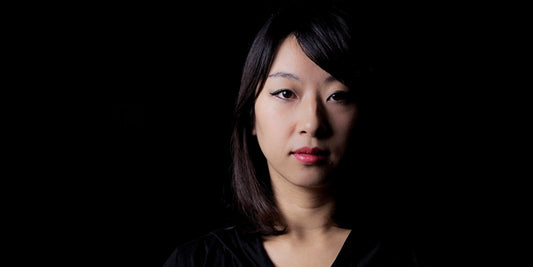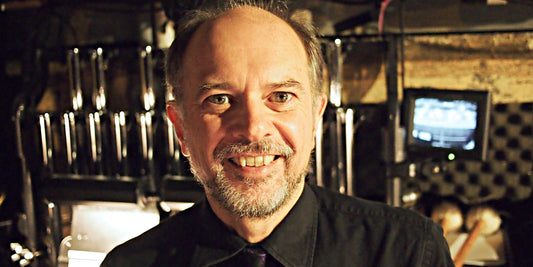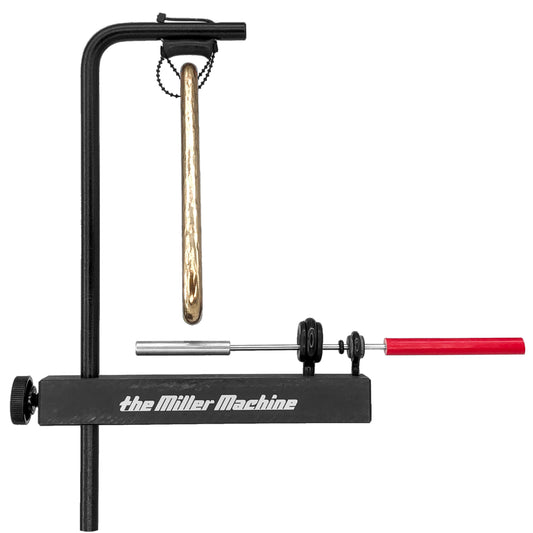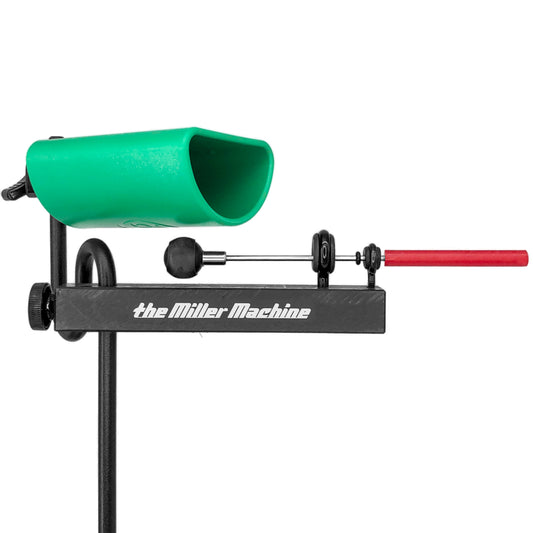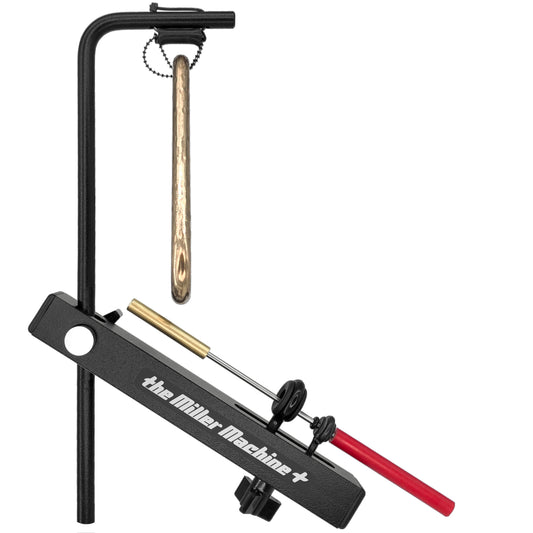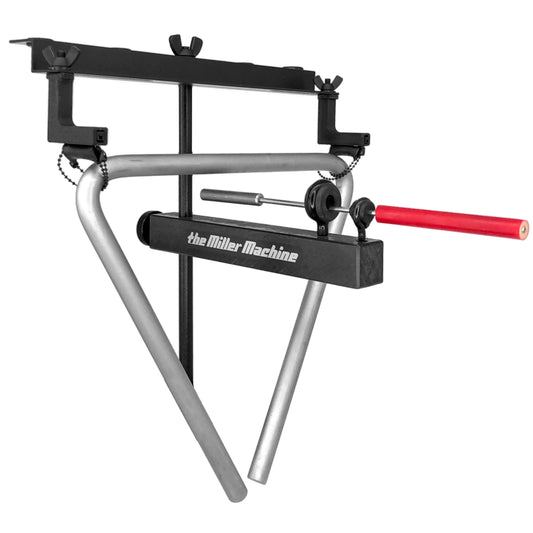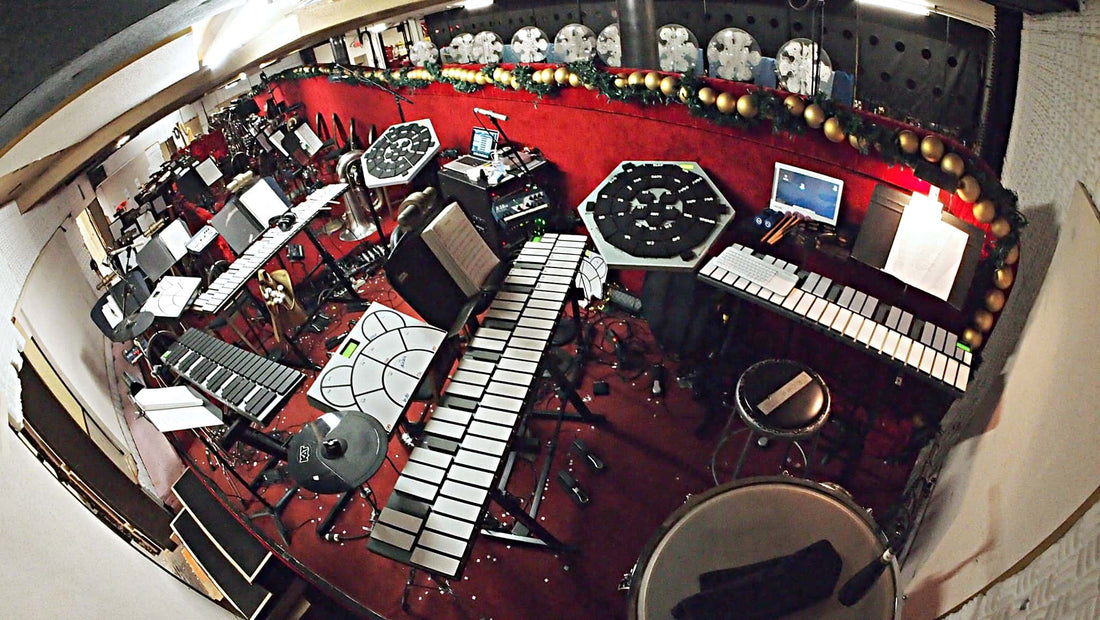
Radio City Christmas Spectacular - Mario DeCiutiis, Dave Roth, and Matt Beaumont
Mario DeCiutiis, Dave Roth, and Matt Beaumont’s percussion setup for the Radio City Christmas Spectacular in New York City.
Matt's write-up below photos.
























Matt Beaumont:
“There are three chairs that comprise the percussion section of the Radio City Musical Hall Christmas Spectacular Orchestra: Drums, Percussion 1, and Percussion 2. For the 2014 production, Tom Olakowski held the drum chair, Mario Deciutiis played Percussion 1, and Dave Roth and Matt Beaumont shared the Percussion 2 book. Percussion 1 is considered the ‘mallet book,’ as Mario is responsible for the majority of the xylophone, glockenspiel, chimes, and vibraphone parts. Percussion 2 is considered the ‘timpani book,’ although it contains a few passages for chimes and glockenspiel. Both players share auxiliary percussion duties.
The bulk of the show is played on electronic instruments, including four MalletKATs, two PanKATs, and two DrumKATs. Samples are triggered on a pair of Apple Mac minis that run Native Instruments Kontakt. Both books share an Apple MacBook Pro which functions as a backup in case the main machine goes down.
Most of the percussion is played on the PanKATs. The white lettering is used to remind the players which pad triggers which sample. Occasionally some percussion is played on the top octave of the timpani patch on Percussion 2's main MalletKAT. Percussion 1 uses the DrumKATs to play congas and bongos throughout the show, and Percussion 2 uses it to play shakers and agogo bells during the percussion break in Twelve Days of Christmas. Both players also use the DrumKAT to play a myriad of sound effects in the Spike Jones-esque Rag Dolls. Finally, Mario primarily plays the mallet percussion parts on the MalletKAT in front of him, but occasionally uses the one to his left for quick instrument changes. Matt and Dave only used their second MalletKAT for one vibraphone passage, and as a backup if an issue developed with the main MalletKAT.
Both MalletKATs are equipped with two foot pedals: one to control sustain, and the other is called the ‘hang’ pedal. The MalletKAT allows a player to assign two distinct samples to a single kit (kit is the MalletKAT name for a patch, which includes the sound being triggered, as well as information on how that sound should be controlled), and then switch quickly between them by pressing or releasing the pedal without having to move between kits.
Timpani are one of most difficult instruments to reproduce digitally, but Mario has programmed the MalletKAT and Kontakt to closely mimic the experience of playing acoustic instruments. Once the player plays single strokes fast enough (ie. a roll), Kontakt responds by playing a roll sample, rather than a series of single notes, which allows for smooth rolls rather than the typical fast, clipped single attacks that many digital renditions feature. The player can also ‘muffle’ the sound by applying light pressure with their fingers to the bars after striking a bar. Finally, different dynamic ranges trigger different samples, so as to mimic the different attacks and tones that timpani can produce at varying dynamic levels.
Finally, Percussion 2 has one acoustic timpani used for a single glissando, which is a crucial stage cue during the Nutcracker scene. Both players use acoustic shakers and tambourines at several points throughout the show.”
Radio City Christmas Spectacular - Mario DeCiutiis, Dave Roth, and Matt Beaumont
December 2014


